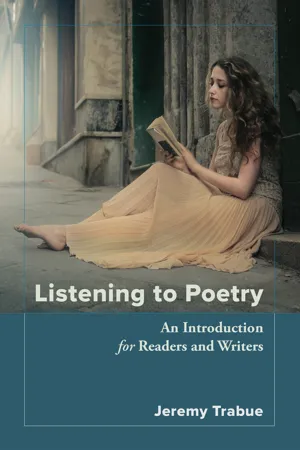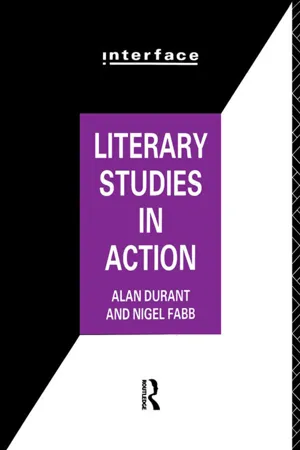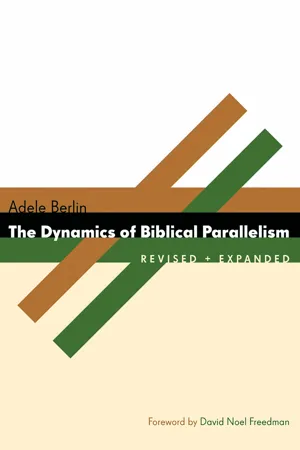Languages & Linguistics
Consonance
Consonance is a literary device that refers to the repetition of consonant sounds in close proximity, usually within a phrase or sentence. It is often used to create a musical or rhythmic effect in poetry or prose. Consonance can also be used to create a sense of harmony or unity in a piece of writing.
Written by Perlego with AI-assistance
Related key terms
4 Key excerpts on "Consonance"
- eBook - ePub
The Princeton Encyclopedia of Poetry and Poetics
Fourth Edition
- Stephen Cushman, Clare Cavanagh, Jahan Ramazani, Paul Rouzer, Stephen Cushman, Clare Cavanagh, Jahan Ramazani, Paul Rouzer, Stephen Cushman, Clare Cavanagh, Jahan Ramazani, Paul Rouzer(Authors)
- 2012(Publication Date)
- Princeton University Press(Publisher)
The Poetry Review 97 (2007).T. FURNISSConsonance. In *prosody, Consonance refers most strictly to the repetition of the sound of a final consonant or consonant cluster in stressed, unrhymed syllables near enough to be heard together, as in Robert Lowell’s “iron ic rain bow” and “Gobb ets of blubb er” or Robert Browning’s “Rebuck led the cheek -strap, chained slack er the bit,” where three final k sounds emphasize the stressed syllables buck -cheek -slack . Consonance parallels the repetitions in *alliteration (initial consonant) and *assonance (vowel) and can be combined either within a syllable to produce other effects, such as *rhyme (assonance + Consonance) or pararhyme (alliteration + Consonance). Critics have sometimes used the terms Consonance, assonance , and alliteration interchangeably with some loss of precision. Consonance also sometimes specifically denotes cases of pararhyme, an effect commonly found in early Celtic, Germanic, and Icelandic poetry, and in W. H. Auden’s “r ead er to r id er” or in early Ren. verse such as Luigi Pulci’s “Stille le stelle ch’a tetto era tutta.” This effect has been referred to alternately as bracket rhyme , bracket alliteration , bracket Consonance , or rich Consonance , though it may be useful to distinguish this double echo from the single echo of final consonant repetition. This would allow one to say that “rider” both alliterates and consonates with “reader,” while in f ur -f air , f alliterates and r consonates. Consonance has often fallen loosely under the terms half rhyme , near rhyme , or slant rhyme , which may blur the distinction between differing vowel and consonant echoes. Combinations that appear to rhyme to the eye, such as lov e-mov e, may only consonate, though some such pairs are accepted by convention as rhyme. Several critics have identified other instances of “partial” or “semi” Consonance when, e.g., one or more echoes involve slightly differing clusters, as in Dylan Thomas’s pairing plat es -hearts , which differs by the r in hearts but retains the t-s echo in both. Likewise, one may find “close” Consonance between voiced and unvoiced final consonant echoes, as in the f and v of wife -lov e or s and z of hears e-war es . Consonance becomes more subtle, and harder to hear, between complex vowel or glide endings, as in the y of day -li e, also sometimes called semiConsonance - eBook - ePub
Listening to Poetry
An Introduction for Readers and Writers
- Jeremy Trabue(Author)
- 2019(Publication Date)
- Chemeketa Press(Publisher)
Consonance is a pattern of repeating consonant sounds in the middle of words. The pattern may include, but cannot be made up solely of, consonant sounds in the middle of words echoing consonants at the start or end of words as well. Like rhyme and alliteration, Consonance is more noticeable when it occurs in stressed syllables.The concept of Consonance can be fuzzy. Some sources use Consonance to mean slant rhyme, alliteration, or some version of them. It’s useful, though, to think of Consonance as its own phenomenon. To get a handle on those differences, consider these three examples:Wet Willie whistles wetly. Through the throw the cat began to mew. However sweetly you ask, none cower in sewers.The first is an example of both alliteration, with \w\ sounds, and of Consonance, with \l\ sounds. The second is an example of internal slant rhyme, with \w\ sounds, and of alliteration, with \th\ sounds. There is no Consonance. The third is an example of Consonance only with \w\ sounds.Assonance
Assonance is a pattern of repeating vowel sounds. Here are a few examples of assonance with the repeated vowel sound in bold followed by its pronunciation:Like Consonance, assonance is defined variably and can be folded into other terms, but it’s useful to count and think about it about separately.beam, fleet, Arabian \ē\mountain, sow \ou\Jane, flail, deign \ā\I, crying, sigh, eye \ī\oaf, sore, dough \ō\It’s common to be confused about the difference between rhyme, especially internal rhyme, and assonance. Two things separate assonance from rhyme. The first is that rhyme comes only at the end of words rather than sometimes in the middle of them, as assonance can. The second is that rhyme has a matching ending consonant sound, and assonance does not. This example should help make the distinction clearer:Wet Willie feels a bit silly while whistling at the filly.This sentence has both internal rhyme and assonance. Sometimes they link up with each other. Let’s identify the rhyme first (underlined):“Willy,” “silly,” and “filly” are all double rhymes. These three words rhyme with each other. This line has strong internal rhyme. What about assonance? The assonance is in bold:Wet • Wil • lie • feels • a • bit • sil • ly • while • whist • ling • at • the • fil • ly. - eBook - ePub
- Alan Durant, Nigel Fabb(Authors)
- 2006(Publication Date)
- Routledge(Publisher)
The third layer is the intonational contour of the speech flow. When people speak English, their voices rise, fall, and pause. The ‘contours’ — so-called because pictures of intonational structure look like mountain ranges, or very angular graphs — are what we call the intonation of speech. We consider intonation in Section 6.1.3. These three layers are resources of the English language which are used in literary texts designed to be read aloud. Texts acquire patterning and structure by making use of the resources of sound structure; and sound structure in turn can lead to particular meanings and kinds of meaning. Even when texts are not read aloud, the process of representing them mentally as we read probably involves giving a ‘sound shape’ to them, and so brings partly into effect these sound patterns. 6.1.1 REPETITION OF SOUNDS Rhyme and alliteration are two ways in which sounds (phones) are repeated in texts. Different kinds of repetition of phones are classified according to where in a word they take place. Here are some examples. Different definitions If you look in different dictionaries or books defining literary terms, you will find a variety of definitions of ‘alliteration’, ‘Consonance’, etc. We will briefly consider why this is, and what kinds of difference there are between the various definitions. One kind of difference between the various definitions involves the amount of repetition. Consonance, for example, is defined by the linguist Geoffrey Leech as repetition of the final consonants in the word, while the critic M. H. Abrams defines it as repetition of the whole sequence of consonants in a word, including the first and middle consonants (e.g. ‘pitter/patter’). Thus Leech allows more repetitions to count as Consonance than Abrams does; Abrams's definition is stricter. Another kind of difference involves which phones count as ‘the same’ for the purpose of identifying a repetition of phones - eBook - ePub
- Adele Berlin(Author)
- 2007(Publication Date)
- Eerdmans(Publisher)
V
THE PHONOLOGIC ASPECT: SOUND PAIRS
Just as parallelism activates the grammatical, lexical, and semantic aspects of language, so, too, it activates the phonologic aspect. Phonologic equivalences and contrasts are often present in parallel lines and they contribute to the perception of correspondence between the lines.Scholars of literature and linguistics have discussed many types of phonologic equivalence in language, especially in poetry. The most common in the English literary tradition are alliteration and rhyme. Biblical scholars, on their part, recognized long ago the Bible’s penchant for wordplay or punning, and have taken note of various kinds of phonologic repetition in a wide variety of passages. These phenomena are generally subsumed under the term paronomasia.1 My discussion will not be concerned with the many types of phonologic repetition in the Bible, nor with the importance of sound in biblical poetry; it will be limited to the repetition and contrast of sounds in parallel lines. More specifically, I will deal with sound pairs.WHAT IS A SOUND PAIR?
Linguists speak of assonance and Consonance. While the former term is sometimes applied to all types of sound repetition, it is properly confined to the repetition of like vowels or diphthongs. Consonance designates the repetition of the same or a similar sequence of consonants with a change in the intervening vowels. An example is “… and what says / My conceal’d lady ” to our cancell’d love ” (Romeo and Juliet , act 3, scene 3). This line from Shakespeare, however, could not be said to contain a parallel sound pair because the Consonance is not distributed over grammatically or semantically parallel phrases or lines.2 An example of a consonant sound pair is: “In the northern hemisphere it was a burnished autumn; in the southern, a burgeoning spring” (James Michener, Space [New York: Random House, 1982], 3). But if we look closely, we find that although the two members of the sound pair have the same or similar (š and ǰ ) consonants, they are not in exactly the same order: b-r-n-š; b-r-ǰ-n . Some might argue whether this meets the criterion for Consonance, but it is precisely the kind of sound pairing that is found in biblical parallelism. I define a sound pair as the repetition in parallel words or lines of the same or similar consonants in any order within close proximity
Index pages curate the most relevant extracts from our library of academic textbooks. They’ve been created using an in-house natural language model (NLM), each adding context and meaning to key research topics.



